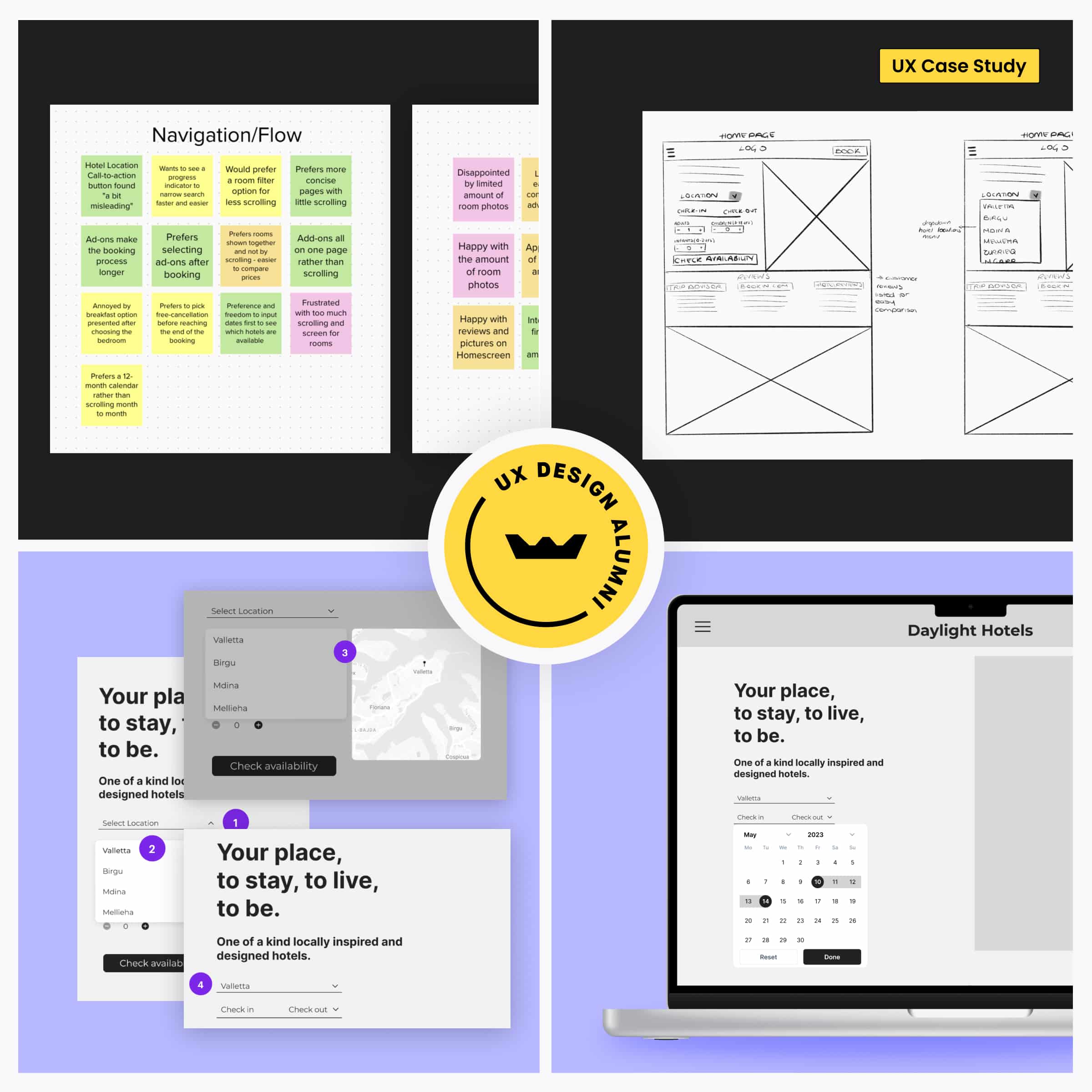How learning UX Design gave a Digital Arts graduate the competitive edge. Meet Antonia.
When it came to finding a fulfilling job in her chosen field, Antonia didn’t rest on her laurels. Despite her university degree, she took the initiative to enrol for the Professional Diploma in UX Design in order to improve her career prospects with a more well-rounded skill set. This is how her plan worked out for her.
My university programme was excellent from an academic perspective but I felt that I required more practical training. After I graduated, I didn’t manage to find a job related to my qualifications, though I was freelancing as an illustrator and graphic designer. I did eventually land an internship but it wasn’t a role I was happy to pursue further, and when it came to looking for another design position, I noticed that UX skills frequently featured as a requirement, even for graphic design roles. I realised I stood a better chance of finding a job I liked if I gave myself that extra edge, so I enrolled for the Professional Diploma in UX Design.
Yes, it did! One of the requirements for my position as Digital Designer with EC English Language Centres was UX design. While I do work on marketing campaigns for different sub-brands, I use what I gained from the UX programme when I’m designing landing pages, websites and emails, for example. It enriches the design experience and helps you become a better, more well-rounded designer at the end of the day. It’s definitely an aspect of my role that I look forward to. And if I ever decide to diversify into another area and away from graphic design, my UX skills allow me to explore different directions as well.
Definitely. The UX design approach is a real eye-opener for designers because it shows you how to place the user at the centre of your efforts and that really matters for the effectiveness of the final output. It’s very different from the aesthetic considerations you take when creating beautiful design assets. Rather, you’re looking at what people need, analysing their experience of an interface and their pain-points, and coming up with the right design solutions to improve that experience. There’s almost a psychological aspect to it that’s really interesting.
It felt like the entire set-up minimises the pressure and gives you the right environment to succeed. I was encouraged by the fact that the programme was held online live and in the evenings, because I was still working at the time. The short duration was another plus, and you get enough time after the ten-week lesson schedule to work on your assignments bit by bit. I’m a university graduate, so I appreciated not having a lot of tasks piling up at the same time. If you miss a lesson, you can catch up through the recording, and you even have the opportunity to choose when you want to sit for your exam. That flexibility was very helpful. You can even split your course fees into instalments, like I did, which is something I was also grateful for. It’s a great approach to learning.
The educator was excellent, always available to help, and he gave us real-life examples since he works in the industry himself. It’s a practical course, so you’re working directly on software like Figma. There’s a student portal with all the resources already available so you can plan ahead if you want to, especially if you’re just starting out in UX design. Every module comes with its own assignment so you have the opportunity to practise and build on your skills.


